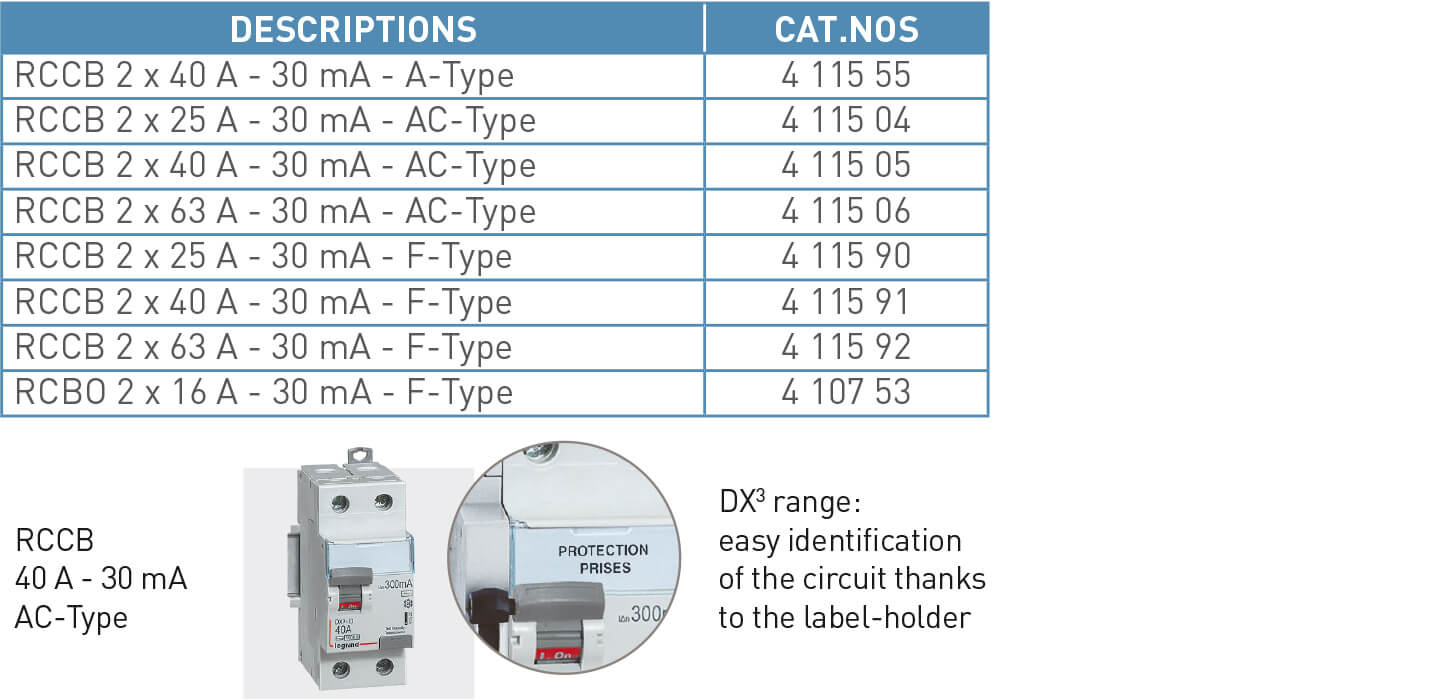What is differential protection?
The differential protection guarantees the protection of people in case of current leakage. It is ensured by the differential switch, a modular element located in the electrical panel and equipped with a manually operated lever to restore the current.
HOW DOES IT WORK?
In combination with an earthed protective conductor, the differential switch detects current leakage due to insulation faults and prevents all risks of electrocution by immediately cutting off the power supply to the circuit concerned in the event of accidental contact with the current.
Example
A household appliance has an insulation fault (stripped or disconnected wire touching the metal casing of the appliance), its casing is then subjected to a voltage of 230 V :
- without a differential switch, any contact of a person with the appliance becomes dangerous, even deadly.
- if a differential switch is present, the risk of electric shock is avoided: in charge of permanently checking that no fault current flows towards the ground, the differential switch detects the current flow and cuts off the power supply of the installation instantly (and automatically).
SOME MAJOR REQUIREMENTS
In order to ensure the differential protection, the installation must meet the following requirements
- that the metal parts of the appliance are well connected to the earth.
- that the continuity of the grounding circuit is ensured from the appliance to the grounding point placed outside.
- that the value of the earth resistance is compatible with the sensitivity of the differential protection.

If one of these three elements is not respected, the differential protection will be ineffective and the installation will be dangerous for the users.
TYPES OF DIFFERENTIAL SWITCHES
Installed at the head of a row of the electrical panel, the differential switch is associated with the circuit breakers of the various electrical circuits located on the row. There are 3 types :
- AC differential switch: it is used to protect most of the circuits except for the cooking plate, washing machine and electric vehicle charging socket circuits. It protects against fault currents (e.g.: touching a live part) with an AC component.
- type A differential switch: it must protect the hob, washing machine and electric vehicle charging socket circuits. In addition to the fault currents detected by the AC type, it allows tripping in the presence of rectified current generated by electronic circuits.
- type F differential switch: it is suitable for the protection of circuits supplying a freezer or computer equipment. It has a reinforced immunity to unwanted tripping, generated by disturbances on the network.
Good to know: the type designation symbol is on the front of the differential switch!
WHAT ARE THE RULES TO FOLLOW FOR OPTIMAL SAFETY?
The number and type of differential switches are determined by the size of the electrical installation.
The NF C 15-100 standard sets certain rules for optimal protection of people:
- install at least 2 differential switches per dwelling, including 1 of type A for the cooking plate, washing machine and electric vehicle charging circuits.
- protect the other circuits with at least one AC or type A differential switch.
- Protect all circuits with differential switches with a maximum sensitivity of 30 mA.
- distribute the lighting and socket-outlet circuits under at least 2 differential switches to ensure continuity of operation.
- associate a maximum of 8 circuits to each differential switch.
The current rating of the differential switch must be:
- either greater than or equal to the rating of the subscriber circuit breaker.
- or greater than or equal to 1 times the sum of the currents of the circuit breakers supplying the electric heating, water heater and electric vehicle charging circuits + 0.5 times the sum of the currents of the circuit breakers of the other circuits.
LEGRAND SOLUTIONS

 kenya
kenya